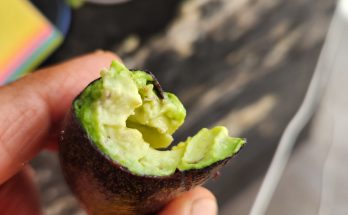Rancho Suelo Vivo_Photo by Martin Buen Viaje
By Diana Hoogesteger
For many decades, those of us who care about the environment have been fighting how we handle livestock. And rightly so. Conventional management, as well as free grazing, are irrefutable agents of erosion and desertification. Added to this are the large amounts of grains and alfalfa needed for their maintenance, which need an enormous amount of water and soil destined for their production. It is not cattle, goats, sheep, and chickens that are the problem; the problem is how we humans handle them.
If you have not heard Allan Savory’s TED Talk 2013, we leave you with that homework. This man has helped to totally change the understanding and the ways to deal with farm animals, as well as how instead of creating desertification, we can return the fertile and living soils to the planet.
Climate change, lack of water, scarcity of nutritious food, and the high toxicity in which we live are generated in large part by our food production practices. That includes both vegetable and animal farming. The good news is that history is already being changed by producers who have adopted holistic and regenerative practices. With these methods we are seeing wonderful results: the production of fertile soils, higher cost-profit productivity, the fight against drought, and improving general health.
I visited and interviewed Mario Pedraza, in the Sierra Gorda of Querétaro. Here I had the opportunity to see a ranch that practices regenerative livestock. Suelo Vivo is called a ranch, because that’s the end result. Mario stated this beautifully. «I am no longer a farmer; I am a land manager.» Asked what he gains with that, he responded, «We convert photosynthesis into money.» It is a great win-win situation. Within approximately two years, he has seen barren grasslands filled with fodder; in two or three years the fodder doubles, and production can be increased. They no longer need to buy supplementary feed; the animals live free of parasites and eat “fresh salad every day.” They are animals that live healthy, stress-free, and this is reflected in the products. On his ranch the drought is delayed, and the prairies remain green most of the year.
How does regenerative livestock work? By mimicking the great movements of herds of ruminants on the planet, i.e., a high density of animals in delimited spaces that are changing places daily.
Mario explains it like this. “365 cows in one place for one day is not the same as one cow 365 days in the same place.” The free cow chooses her food and her paths, eating everything that grows, and leaves the land bald. The herd, being in competition for the available food, eats everything and leaves large amounts of feces and urine—which are fertilizing agents. Simultaneously, the herd kneads the earth with its hooves, leaving behind soft and fertile soil. When the herd moves on to a different spot, the land left behind is given a rest. This allows seeds to germinate easily and new plants to grow. (Watch Allan Savory’s talk or the movie “Kiss the Ground.”)
What is called non-selective or rotational grazing results in an increase of the layer of healthy soil around the globe. The restoration of the soil’s health comes through the presence of organic matter, minerals, and living matter. Rotational grazing can be done with any farm animal: chickens, pigs, goats, or sheep. You have to adapt to the geography and size of the area for greater efficiency and observe the results. Mario first worked with cows, because his family has dedicated their lives to cattle. However, he noted that on the slopes of mountains, goats and sheep produced better results. To make it work with livestock, one has to move the animals frequently through a series of pastures called paddocks. Electric fences, easily transported and installed, are used to delineate the areas. Depending on the available land, you have to determine the density of animals and the rotation time to produce optimal results.
Unlike conventional or free-range farming, rotational grazing requires planning, observation, and daily grazing work. But the results are pure profit. There is the economic profit because they no longer have to buy fodder or medicines. There is also the profit of a healthier livestock, because they grow free of hormones and toxins. There is also the profit of water collection and mitigating of droughts. The most important benefit is that with this practice you are regenerating the land instead of destroying it, leaving a legacy of well-being to our children and future generations.
The biggest problems that humanity faces are climate change, scarcity of water, lack of sufficient food, and the loss of biodiversity. The solution is right under our feet (“Kiss The Ground,” www.kisstheground.com), creating living soils and clothing Mother Earth again (Facebook and Instagram: Rancho Suelo Vivo). It is the method used at Vía Orgánica with regenerative agriculture (www.viaorganica.org). If you are not a producer, you can help by supporting those producers who work with these practices and stop consuming foods that destroy the planet. The change is urgent.
We invite you to visit us at the Vía Orgánica Agroecological Ranch here in San Miguel de Allende. Here you can see the soil restoration work in arid areas with the “One Billion Agaves” project, our mesquite and endemic tree nursery, and the regenerative farm with chickens, ducks, geese, pigs, and grazing goats and sheep. We are here for you Monday to Sunday from 8am to 6pm. Road to Querétaro, deviation to Jalpa km 9, El Membrillo.




